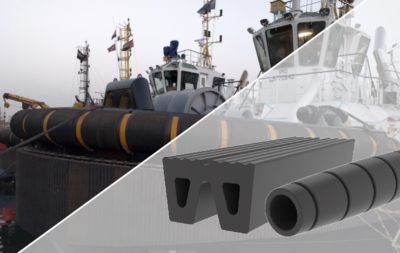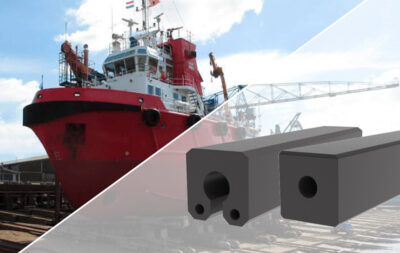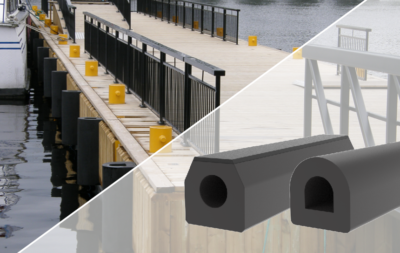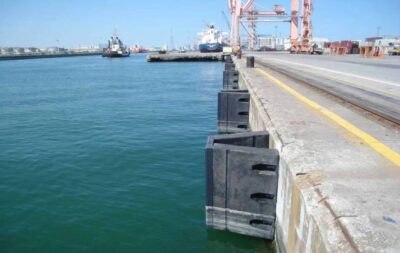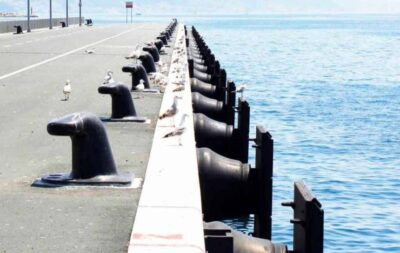Fenders
What is a dock fender?
Rubber or wooden bumpers of various types that are used on docks at the point of contact between the vessel and the dock are called fenders and prevent damage to them at the point of contact. Some types of fenders can also be used as hulls of vessels and ships. Fenders or bumpers prevent direct collision of two rigid objects. Fenders may be installed on ships, docks, pontoons, barges, etc. In the past, fenders were used as woven ropes, but today, rubber with a multi-layer coating and yarn texture are used in the layers of the fender. Different types of fenders such as: V-fender, D-fender, cylindrical fender, shackle fender, etc.
PNEUMATIC RUBBER FENDER:
This type of fender has three layers, the outer layer is made of rubber, the tire cord layer and the primary rubber layer. This fender is available in a mesh and simple form. It has a flange or towing ring. It has an air inlet that can withstand from 0.5 to 50 bar. Currently, 80 Kpa is also available. Usually, tires are placed on the outer layer so that it is not damaged in case of bursting due to pressure on the outer layer of the ship. These chains are connected with arms and when bursting, Prevents the layers from being shot.
Bumpers have many applications in various industries such as rubber manufacturing, automotive, oil, gas, petrochemical, and especially shipping. What is most used in the maritime and shipping industries are different types of fenders, which we will briefly mention.
The most common use of fenders is in the country’s port docks, which are SUC type fenders and V fenders.
SUC has different dimensions, depending on the type of port, the ships that dock in that port, and even the port inlet.
All stages of construction of this type of fender, from the construction of molds to the implementation and maintenance after installation, are carried out by Mahran Darya Sazeh Company, utilizing the experiences of experienced engineers. Stages such as rubber production, chain production, pad production, fender accessories production, etc. are all made and completed using state-of-the-art technology to reduce the tolerance for human error to zero.

